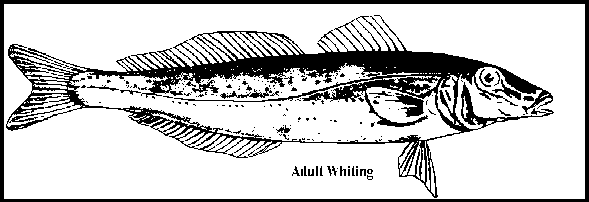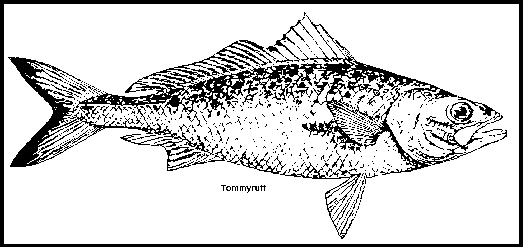
This is the MLSSA Newsletter, the monthly publication of the Marine Life Society Of South Australia Inc. Our Society is active in trying to protect our marine environment and this Newsletter usually contains articles about marine life and the marine environment.
Copyright - the contents of this Newsletter are copyright and may not be reproduced without prior permission of the Society.
Disclaimer - The opinions expressed by authors of material published in this Newsletter are not necessarily those of the Society.
You can join the Society or just subscribe to our Newsletter and Journal. To do either, please complete the form inside the back cover of this Newsletter and mail it with the appropriate payment to:
Please send all general correspondence, subscriptions or Newsletter and Journal contributions to this address. Correspondence may be marked to the attention of the Secretary. Subscriptions may be marked to the attention of the Treasurer. Newsletter or Journal contributions may be marked to the attention of the Editor.

Fees
These became due on the 1stApril and the Treasurer would appreciate prompt payment. We will be able to afford to send un-financial members only this and the May Newsletter.
Welcome
Christopher Hall (no relation) has joined the Society. He attended the February meeting and in spite of several organisational problems decided to give us a go. He is a very well qualified diver and we hope he will be coming along on the June Long Weekend trip to Edithburgh. Have YOU booked for Edithburgh yet? 17 people have so far.
Aquaculture
Unfortunately, Ron Bellchambers will not now be able to undertake the Course in Aquaculture mentioned in the March Newsletter, as it will not be available locally. Ron lives at Maitland on Yorke Peninsula.
Committee Positions
The Annual General Meeting is in May and we require nominations for Committee positions to be published in the May Newsletter. If you wish to nominate, or to nominate someone else (with their permission), then please contact me before 30th April. The positions are President, Secretary, Treasurer and 2 Committee members.
Philip Hall
The May General Meeting will be held at our usual meeting place, the Conservation Centre, 120 Wakefield Street, commencing at 8pm sharp.
There will not be a guest speaker as such but we will have the opportunity to ask John Hill of the State Labor Party questions regarding their policies on the Environment. So come along and ask about any aspect of policy that is of concern to you.
The following article was retrieved by me from the Internet webpage of Dr Rod Connolly (http://www.ins.gu.edu.au/eas/SCI/ecology/rod/rodhome.htm). Further articles by Rod will be published during this year.
The diet of juvenile King George whiting, Sillaginodes punctata (Cuvier & Valenciennes), was determined by examining the stomach contents of fish collected over two years from shallow eelgrass and unvegetated habitats in the Barker Inlet - Port River estuary, South Australia. Estimates of weight of prey actually ingested by fish were made by combining abundances and sizes of prey found in stomachs with data on the size - weight relationship of potential prey items collected separately. Fish ate epifaunal invertebrates exclusively. A range of crustaceans formed the main prey, with smaller fish taking mostly harpacticoid copepods. Amphipods were more prominent in the diet of larger fish, which also fed upon polychaete worms. Fish fed mainly during the day. Fish collected at night typically had very little food in their stomachs, as measured by a fullness index (ratio of estimated ash-free dry weight of ingested prey to dry weight of fish). Relatively few fish were caught over unvegetated habitat, but where comarisons could be made, polychaetes rather than crustaceans predominated.
Connolly, R.M., 1995. Philip Hall

At the February General Meeting the following Code of Practice was adopted for the Diving Officer. The Committee considered the question of a permanent Diving Officer at the March Committee meeting and will report back to the April General Meeting.
Pre-Dive Planning
Liase with divers
Ensure any necessary safety equipment is available.
Obtain a weather forecast, tide data and any relevant local information.
Obtain local emergency numbers and hospital/medical locations.
On Site
Ascertain conditions.
Ensure divers are fit to dive.
Allocate buddies pairing the less experienced appropriately.
Provide a dive brief i.e.
site details (depth, entry/exit, hazards)
communication
turnaround time
dive termination
lost buddy procedures
location of first aid kit
dive gear and buddy checks
Post Dive
Ensure everyone is fit and well.
Conduct post dive brief and encourage the logging of the dive.
Completion of creature capture logs.
Authority
The dive leader may:-
Cancel the dive if conditions are not suitable.
Not permit an uncertificated diver to dive.
Direct a member to not dive if that person may present a hazard to themselves or other divers.
Ron Bellchambers sent me a clipping from the Country Times dated 20/1/98. It was about the setting up of a Blue Swimmer Crab breeding centre. Ron checked up on the details in the article and found that it was a very inaccurate account of the status of the project. Ron is following it up and intends to write an illustrated article for a future Newsletter.
Margaret and I attended the morning programme of this workshop which was designed to explain how to run a Junior Marine Studies course. It also served as an introduction to Networking for the International Year of the Ocean.
I was given the opportunity to introduce MLSSA to the group and then to chat to various participants at the interval in the morning programme.
One speaker was Tony Flaherty who had just been told he had to find new office accommodation as his office at SARDI was required for someone else. He gave a very interesting illustrated talk in which he covered a wide variety of marine issues.
Philip Hall
To ensure that we monitor each of the six main metropolitan sites at least twice per year, the following schedule has been devised. All Reef Watch divers are most welcome to attend these dive days, held on the last Saturday of each month.
Please call, if you can attend, on 8223 5155.
It is not intended that these dives take the place of your own schedule of monitoring at your own particular site - it's mainly a way to ensure the main metropolitan sites are covered. It is also a good way of meeting and keeping in touch with others participating in Reef Watch.
DATE SITE
Apr25 Aldinga
May30 Semaphore
Jun27 Broken Bottom
Jul25 Pt Noarlunga
Aug29 Hallett Cove
Sept25 Barge/Dredge
Oct31 Aldinga
Nov28 Semaphore
Dec26 Broken Bottom
Dates for Training
The following dates have been set for Reef Watch training. Note that some sessions are for the Basic Survey method and some for the Advanced Survey method. If you can attend any of the following sessions, please let Reefwatch know on 822305155
April
Wednesday 8th - Advanced Survey method.
Wednesday 29th - booked for Adelaide University Dive Club
May
Wednesday 13th - Basic Survey method.
Wednesday 27th - Advanced Survey method
Courtesy - February edition Reefwatcher Philip Hall
Well, seeing as I have not been on a dive for some time now I thought I would reflect on a dive I had 2 years ago out at Wardang Island. The dive took place on a calm Sunday morning and the trip out to the south west tip of the island was as smooth as a ducks bottom. On arrival at our dive destination, we let go the anchor and suited up for the dive. I must say, after looking over the side of the boat and seeing the bottom as clear as day, I thought we were in only 2 metres of water. But I was reassured by a friend that we were in fact in 7 metres of water. Its clarity was apparently due to the Spencer Gulf Current running out.
After entering the water the first thing I took note of was the bottom. It was limestone and fairly void of any sea grasses, except for short vermicelli type sea grass in places. The first fish that I came across was a Blue Morwong which is also known as a Queen Snapper. A little further on I came across another one and my friends also saw several of these fish. I suppose the thing that surprised me after this dive was to read in my fish books that these fish are normally found in much deeper water. So whether their presence in shallow water was due to mating, or to some other ritual that they were engaged in, I do not know.
A little further along I saw a beautiful Blue Devil and have found out since that this is the only name this fish is known by. Later in the dive I headed into the inner shore, and there to my amazement I found a maze of inshore reefs with an abundance of marine life. There were Garfish, Yellow Eyed Mullet, Banded Sweep, Squid and King George Whiting to name but a few. The weed in this area was more prolific than in the area further out.
The only other creature to be seen in this area that I took note of was a one and a half metre bronze whaler, just gliding lazily through the maze of reefs.
The swim back to the boat was a slow one as the tide had changed and was now heading back up the Gulf.
I do have to admit this was one of my best dives, as the clarity of the water was excellent. The visibility would have been about 8 metres.
In ending this dive report I would just like to say that Wardang Island and its surrounding islands should be either Heritage Listed or made into a Marine Park. I would also like to see the Inner Port Victoria area be protected due to the large amount of sea grasses this area has, and also because it is a fish hatchery area and has a large amount of spratts and fingerlings in and around the area each year.
Extract from a letter dated 21/2/98 by Ron Bellchambers
On Friday 27th February Margaret helped me to give a talk on local marine fish to this organisation. It came about from a request for another talk after the one I gave to the University of the Third Age last year. I chose a wide selection of slides from our Photo Index and made good use of the occasion to publicise MLSSA and its activities.
The Southern Hospice Friends is a support group which was formed to help those who have lost a partner and have now moved on from the official Hospice Support system.
About 47 people attended the meeting and the talk was well received, with many people asking questions and obtaining information on the Society.
Congratulations must go to Geoffrey Mower who has achieved 21 years of membership with the Marine Life Society of South Australia and its predecessor, the Marine Aquarium Research Institute of Australia. In recognition of this event the Society is granting Geoff one year of Honorary Membership for 1998/9. We hope to present him with a certificate to celebrate the occasion at the April General meeting.
Several other members become eligible over the next few years.
It should be stressed that the membership is not necessarily continuous and may be broken for some reason. However, during the break, the person continued a very close relationship with the Society.

We have had two requests from Southern Diving.
One was to again set up a Marine tank on the bus during the Boat Show. This year we intend to position it adjacent to the entry window so that people who do not enter the bus can see it from the outside. This will be in late June and so we will need to collect specimens, to add variety to last years creatures, during the June Long Weekend at Edithburgh.
It should be noted that the the Royal Show is in September and we will also need to collect for this, as we intend to display at least two tanks this year. A small 2 foot tank will be necessary for the display of a single fish in the Champion Native Fish section.
The second request was for a speaker to address the Southern Diving Club on May 6th at 7.30pm. David Muirhead has agreed to undertake this task. Any MLSSA Member who also would like to attend will be most welcome.
Mary Anne Stacy of the Port Noarlunga Aquatics Centre recently discovered an unusual fan worm on a pylon of the Pt Noarlunga Jetty. Suspecting it to be a Sabella worm (a species introduced from European waters in ships ballast) Mary Anne organised for it to be identified. Her fears proved to be correct.
This is especially disturbing as although this highly competitive worm is particularly abundant in the Port River area, they were not thought to have spread further south than the "Blocks" at Glenelg. Sabella competes very successfully with native species for growing space and nutrients and is capable of rapidly colonising large areas. As such it poses a considerable threat to the diversity of reef fauna and flora. It is also extremely difficult to eradicate.
Please report their exact location of any other suspect fan worms you encounter, (Don't remove them) and we will assist you to have them identified.
Courtesy - February edition Reefwatcher
Articles/references to this worm may be found in the following MLSSA Newsletters.
January 1996 No. 218
February 1996 No. 219
July 1996 No. 224
February 1997 No. 230
March 1997 No. 231
August 1997 No. 236
At the March General Meeting members were asked if they could design a Publicity Sticker for MLSSA. The only requirement is that it must contain the MLSSA logo as well as a suitable adage.
We would like contributions from any MLSSA member so please send in your contribution as soon as possible..
Once we have a selection to choose from they will be submitted to Committee and then the General Meeting for evaluation and adoption.
Philip Hall
Further to my recent article concerning this species, I, with Paul Fitzgerald, saw a large adult male and female Blue-tailed Leatherjacket (Eubalichthys cyanoura) forming a loose pair, on a dive on the Noarlunga Tyre Reef on 15/03/98; this representing my most easterly sighting of this fish, usually known from Yorke Peninsula westwards.
This was a good dive with active fish life on the strong outgoing tide, including what I think was a juvenile Degen's Leatherjacket (Thamnacenus degeni), a supposedly not uncommon species but one which I have seen very rarely.
The worry on this dive was a small, 15cm pilot fish (Naucrates ductor) racing around amongst numerous small snapper - one couldn't but wonder whether it had a much larger host nearby!
David Muirhead
Many people are afraid to refer to creatures by their scientific names because they are unsure of the Latin pronunciations.
Here are three rules to help you to pronounce the Latin/scientific names of fish.
1. The letter "I" at the end of a fish's species name is always pronounced the same as "eye". e.g. Port Jackson shark - Heterodontus portus jacksoni. Jacksoni is pronounced Jackson- eye.
2. The letters "dae" on the end of a fish's family name is always pronounced the same as "see". e.g. The bullseye family "Pempheridae" is pronounced as Pemfer-i-Dee.
3. The letters "ch" are pronounced the same as a "k". e.g. The butterfly fish family "chaetodontidae" is pronounced as Keeto-donti-dee.
These three rules alone will probably give you a surprise when you study the scientific names of your favourite species.
These pronunciations may take some getting used to but if you try them from time to time you will soon get the hang of it all.
Anon - October 1982 Newsletter
| To Home Page |